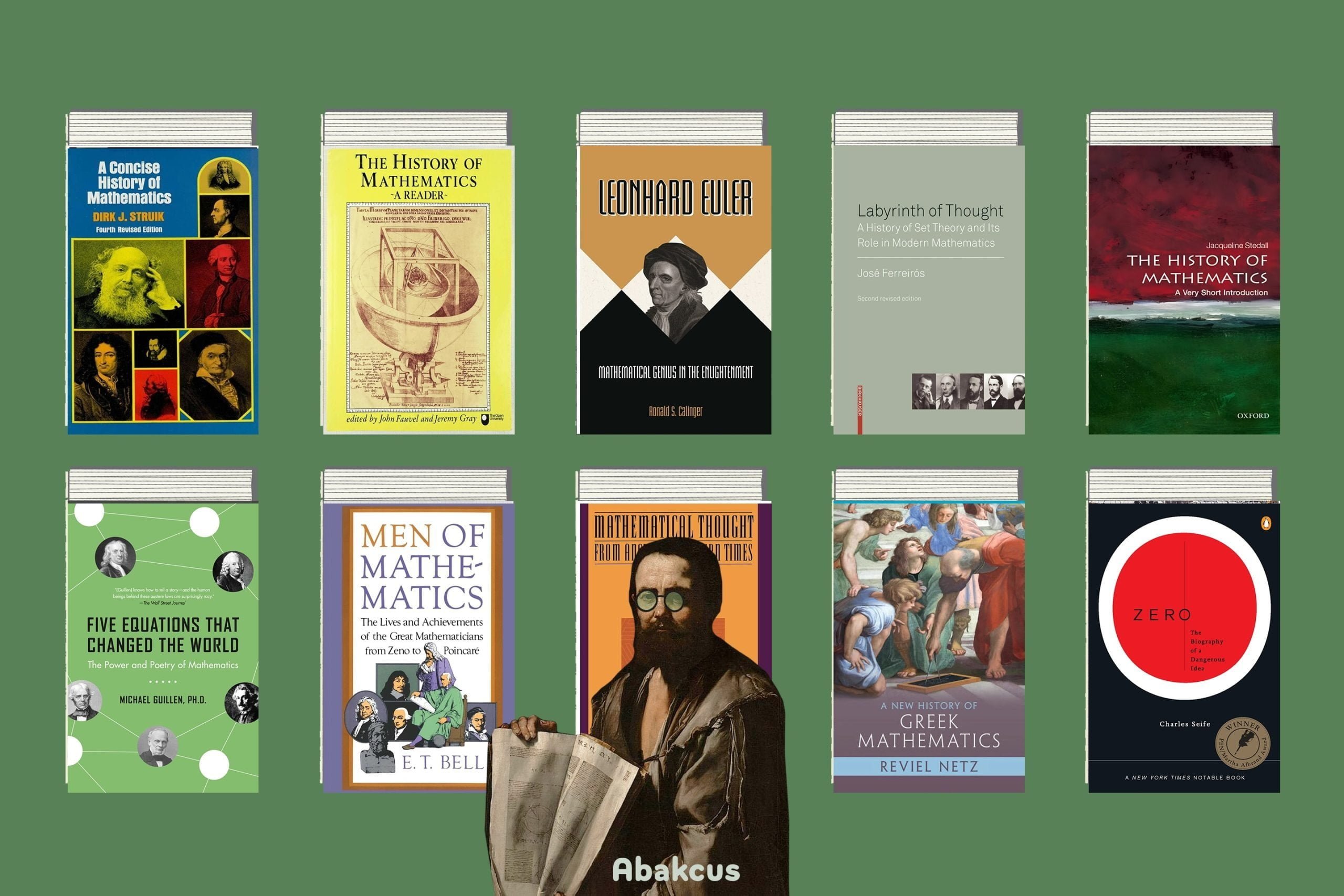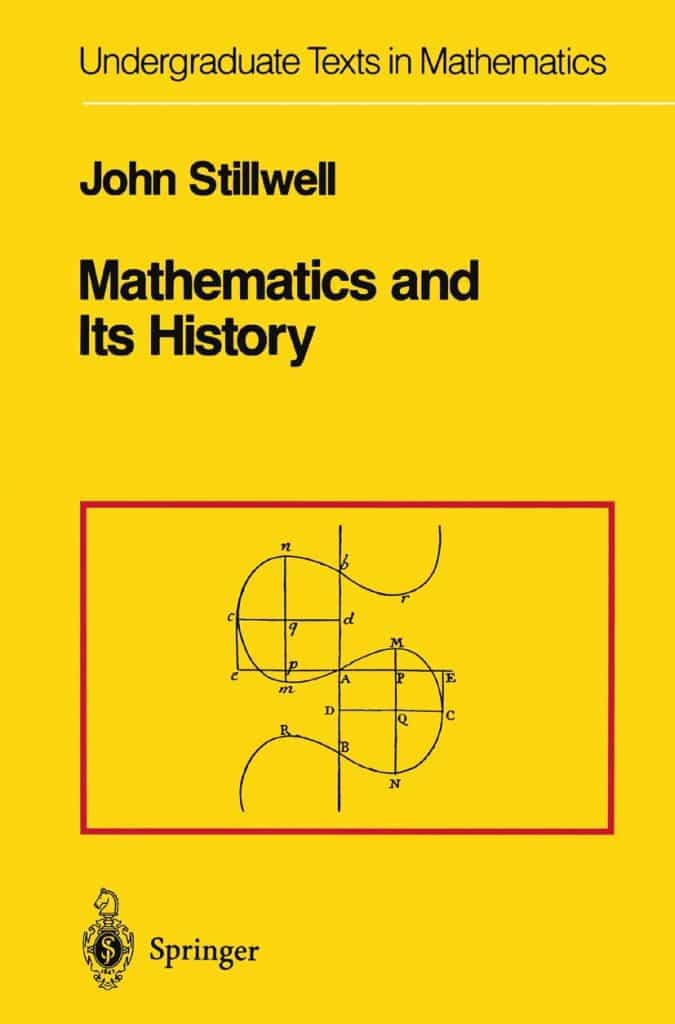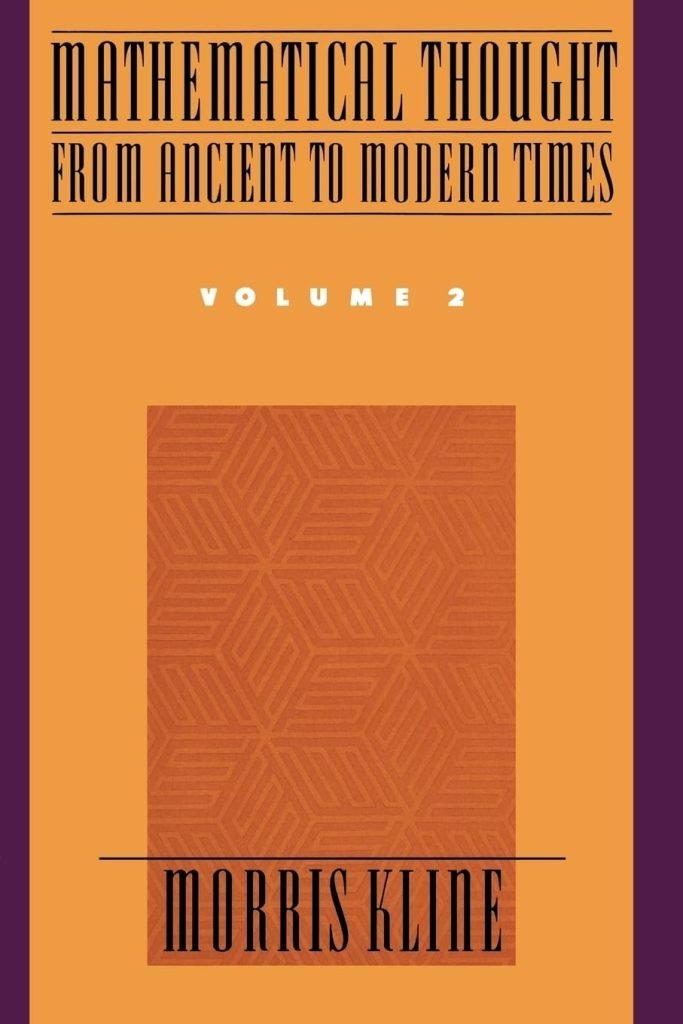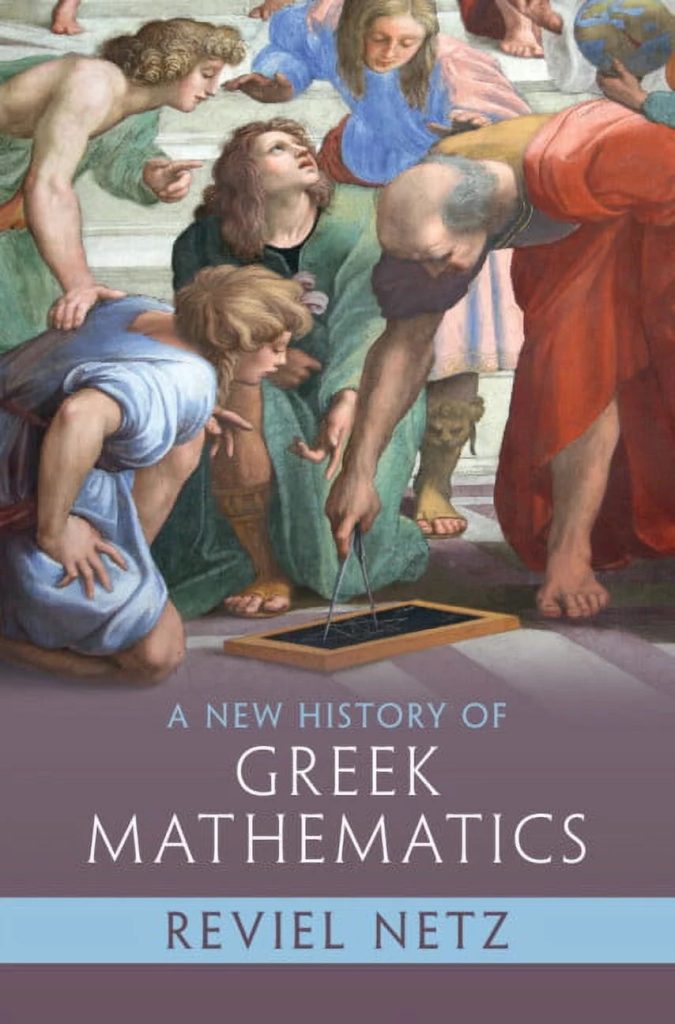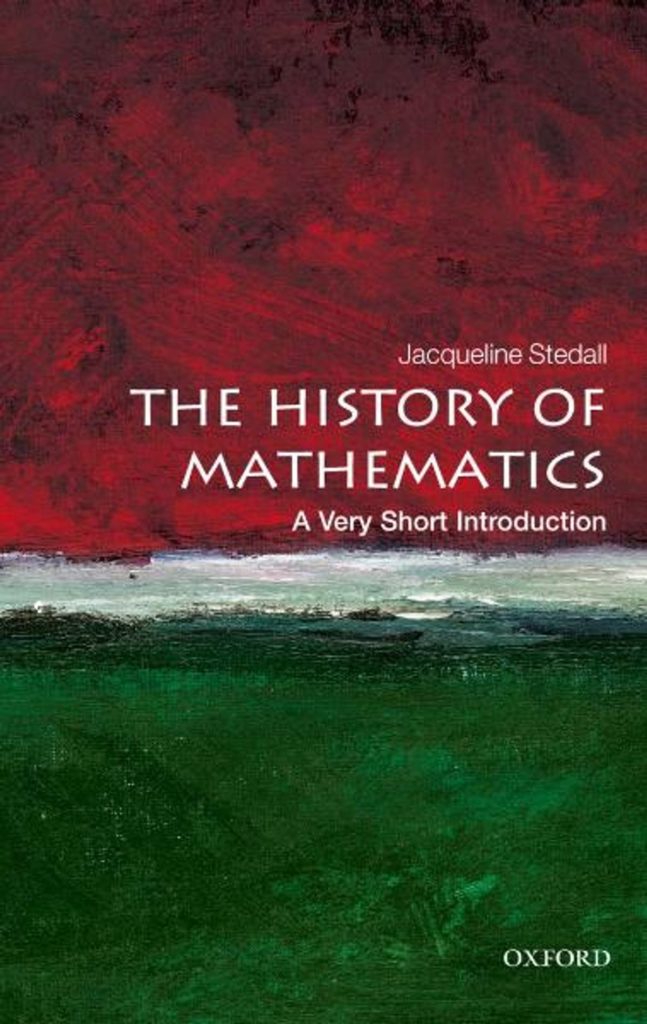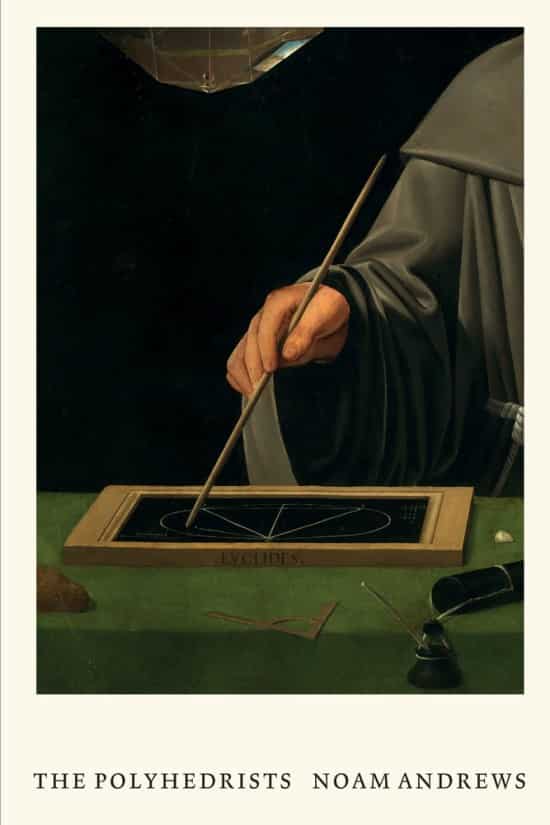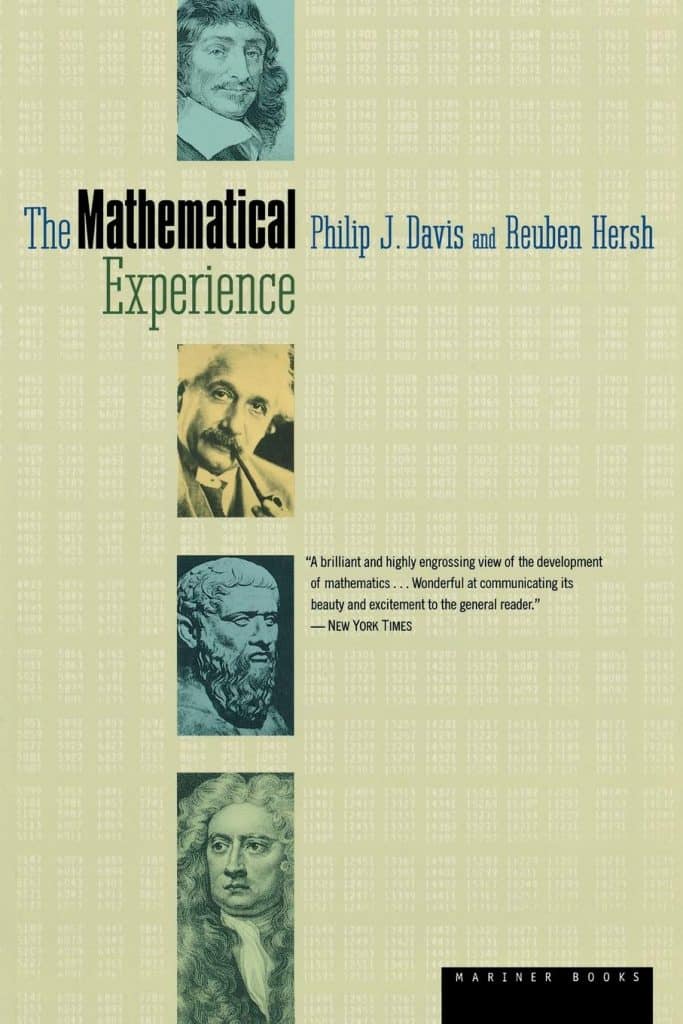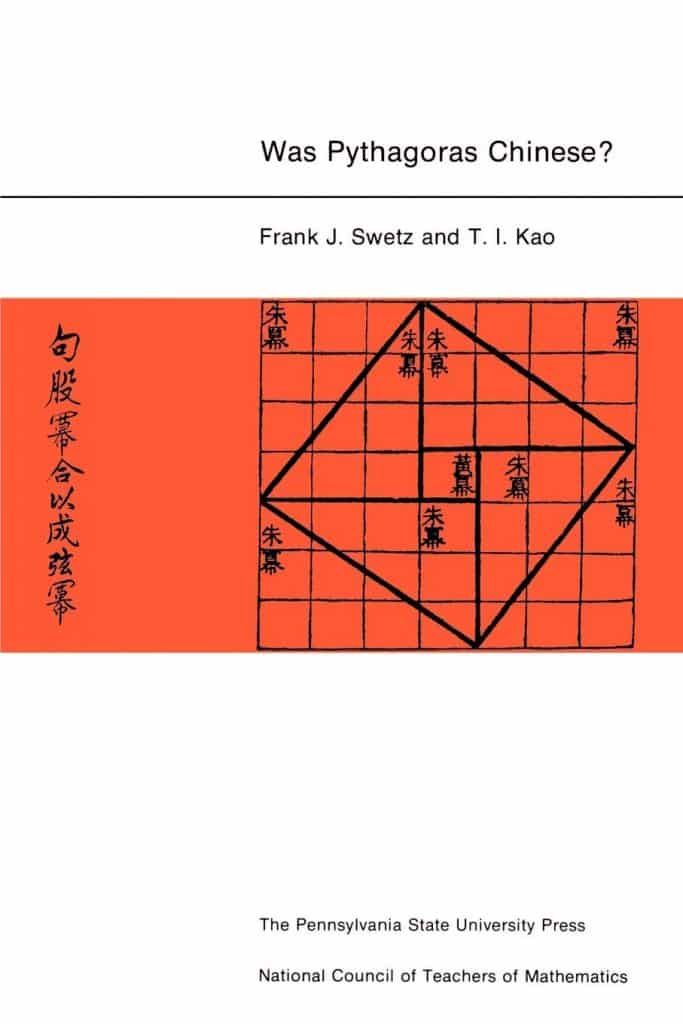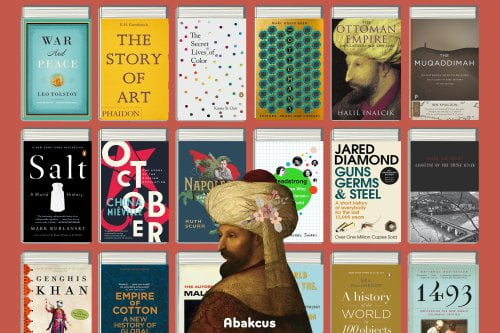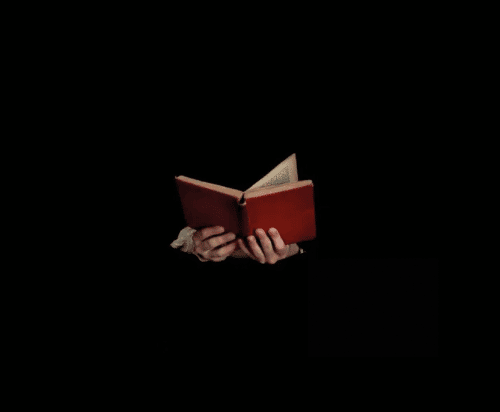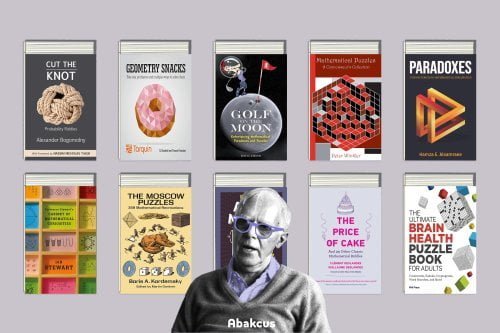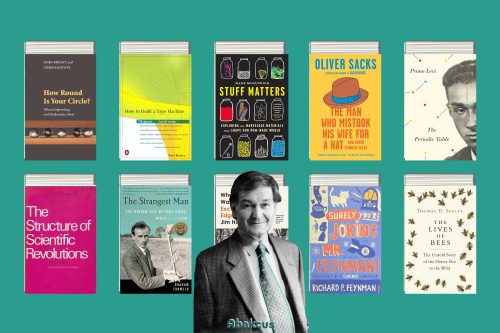Mathematics, the universal language of logic and reasoning, has a rich and intricate history that is often as fascinating as the theories and equations themselves. This math books list comprises ten books that offer readers a journey through the complex, captivating narratives that have shaped mathematics history. Each math book unravels a unique story, from ancient mathematical principles to the groundbreaking theories of the modern era. Whether you’re a mathematics enthusiast or a history buff, these books promise to imbue you with new perspectives on the discipline that underpins virtually all aspects of our lives.
Have you ever wondered why we study the mathematics history? Well, just like paintings, music, and literature, mathematics has a long and fascinating history. In fact, mathematics is one of the oldest subjects we know, with the earliest evidence of writing being numerical. What’s more, the mathematics history is multicultural, with its origins stemming from Africa, the Middle East, and Asia. By studying the mathematics history, we gain a deeper understanding of the world around us and how different cultures and civilizations shaped this incredible subject. From ancient counting practices to modern calculus, the story of math is one worth exploring!
Table of Contents
10 Great Books About Mathematics History

Below, I have listed 10 exceptional math books that delve into the rich mathematics history. This selection is unique, curated with care to provide a comprehensive overview of the seminal developments and key figures that have shaped the mathematical landscape. These books span epochs and civilizations, each offering a unique lens to appreciate the evolution of mathematical thought. From the mysteries of the ancient world to the analytical rigor of modern mathematics, these selections promise to be enlightening to both the casual reader and the math enthusiast. Enjoy this journey into the past and into the heart of the discipline that is at the foundation of our understanding of the universe.
If mathematics had a biography, it would be Zero: The Biography of a Dangerous Idea by Charles Seife. This book showcases mathematics in an entirely new way as readers are taken on a journey through zero’s history, uses, and implications. From ancient civilizations to our modern mathematics, Zero: The Biography of a Dangerous Idea chronicles how zero has shaped mathematics and our world in remarkable ways. Whether you are interested in mathematics or want a captivating read, Zero: The Biography of a Dangerous Idea is sure to please.
The Babylonians were the ones who first came up with the idea. Still, the Greeks outlawed it, and the Church employed it to combat heretics. At this point, it poses a danger to the fundamentals upon which modern physics is built. Once it was tamed, the power of zero became the essential instrument in mathematics. For ages, its power was associated with the dark arts and the demonic. Because zero, the number that is the twin of infinity, is unlike any other number. It is nothing and everything at the same time.
In his book “Zero: The Biography of a Dangerous Idea,” science journalist Charles Seife traces the history of this seemingly innocuous number from its origins as a philosophical concept in the East through its fight for acceptance in Europe, its ascent and transcendence in the West, and its ongoing danger to contemporary physics. From Pythagoras to Newton to Heisenberg, from the Kabalists to today’s astrophysicists, these great philosophers have tried to grasp it. Their disagreements shook the foundations of philosophy, science, mathematics, and religion.
Zero has put East against West and faith against reason, and its intransigence endures in both the shadowy interior of a black hole and the dazzling flare of the Big Bang. Today, the concept of zero is at the center of one of the most contentious debates in the history of science: the search for a theory that explains everything.
Get ready to embark on an extraordinary journey through undergraduate mathematics with Mathematics and its History by John Stillwell. Unlike traditional math textbooks, this book offers a captivating and concise exploration of the subject.
In order to truly appreciate the depth of this book, the author assumes readers have a solid understanding of basic calculus, algebra, geometry, set theory, and some advanced concepts like group theory, topology, and differential equations. This makes it the perfect companion for senior seminars or advanced students considering graduate school.
What sets Mathematics and Its History apart is its engaging and accessible writing style. I couldn’t put it down, even when it meant sacrificing my usual thrilling novels. Each chapter provides a preview section, setting the stage for what’s to come. The inclusion of exercises and brief biographies of influential mathematicians keeps readers engaged and adds depth to the topics discussed. Finally, the book fittingly concludes with a brief biography of the legendary mathematician Paul Erdos.
Stillwell masterfully weaves together the dominant themes of undergraduate mathematics, and the table of contents alone showcases the vast scope of the text. Let me highlight two chapters that particularly caught my attention.
The chapter on simple groups offers a fascinating history of the classification of finite simple groups, a major achievement in 20th-century mathematics. Simple groups, initially thought to be exhaustively represented by cyclic groups of prime order, were later joined by the alternating groups and the finite groups of “Lie type.” Further discoveries led to the identification of sporadic simple groups, and the tireless efforts of mathematicians ultimately resulted in the complete cataloging of 26 sporadic simple groups. Stillwell effortlessly brings this triumph to life, offering insights into the challenges this classification problem posed.
The chapter on polynomial equations is another standout. Starting with linear equations, the reader is taken on a carefully constructed journey through quadratic, cubic, and quartic equations. From quadratic irrationals to the impossibility of duplicating the cube using only straightedge and compass, this chapter reveals the fascinating interconnections between different mathematical concepts.
While Mathematics and its History brilliantly connects seemingly disparate areas of mathematics, each chapter can be read independently. I highly recommend this book to anyone with an interest in the history of mathematics. Mathematics and its History is also an invaluable resource for mathematics teachers, providing enriching material for undergraduate courses. If you’re looking for a gift for an outstanding math major or the president of a math club, look no further. But be warned – once you pick up Mathematics and its History, it’s hard to put down!
Get ready to dive into the intriguing history of mathematics with Morris Kline’s captivating book. Unlike philosophy or literature, mathematics doesn’t have a conventional history, making this neglected field of study all the more fascinating.
Kline takes a unique approach by striking a balance between depth and accessibility. He gives the Greeks only 15% of the spotlight, briefly mentioning the Egyptians, Arabs, and Renaissance, before focusing on the revolutionary René Descartes.
Kline’s passion for synthetic geometry shines through as he brings Greek geometry to life. Instead of overemphasizing the human aspects, he expertly translates the brilliance of Greek geometry into modern language. He even highlights the often overlooked figures like Apollonius.
The book reaches its climax with the chapters on nineteenth-century analysis. Kline’s expertise in the subject makes this section a joy to read. His blending of historical development with a clear, linear description gives readers a comprehensive overview of mathematics up to the turn of the century.
While the book excels in many ways, there are some limitations. The chapters on differential geometry may be difficult for students trained in recent years, as they lack contemporary notation. Kline also takes a conservative approach to functional analysis and topology, which differs from current practices in graduate courses.
Despite any criticisms, this 1200-page treasure deserves a spot on your shelf. It is, without a doubt, the best book on mathematical history available.
Discover the captivating world of philosophy with Bertrand Russell’s monumental work, A History of Western Philosophy. This comprehensive book takes you on a journey through the major streams of philosophical thought, providing valuable insights into how the ideas of various philosophers are interconnected. Russell’s clear and accessible writing style sets him apart from other philosophers, making this book a refreshing read.
While discussing the historical importance of the notion of essence, Russell fearlessly shares his personal opinion, challenging commonly held beliefs. But don’t dismiss his opinions – Russell himself is one of the most influential philosophers of the Twentieth Century.
As you delve into this book, you’ll see the influence of the World War II era on later philosophical doctrines. Russell expertly weaves in the ethical positions and propaganda of the Allies and Nazis, giving you a deeper understanding of the context in which these ideas developed. Keep in mind, however, that more recent philosophical developments are not covered in this volume.
Although A History of Western Philosophy can be overwhelming at times, Russell’s guidance leads you through the philosophers from ancient Greece to World War II. As you progress, you’ll start to see common threads emerging, connecting the chapters and shaping the history of human thought.
It’s important to note that you won’t remember everything Russell conveys on your first read. This book is best suited for those who already have a general understanding of philosophy and want to delve deeper into its intricacies. It’s also a valuable resource for those who have explored the original works of philosophers and want to gain a better understanding of their place in Western Philosophy.
You can read A History of Western Philosophy on its own or in conjunction with The Great Philosophers, which draws much inspiration from Russell’s work. Whether you’re just starting your philosophical journey or have already immersed yourself in this fascinating field, A History of Western Philosophy is a must-read. Until another genius like Russell comes along to update it, this remains the ultimate guide to the ideas that shape modern Western thought.
Explore the groundbreaking world of ancient Greek mathematics as never before with this brilliant and ambitious book, A New History of Greek Mathematics by renowned expert Reviel Netz. From Archimedes to the scientific revolution, be captivated by the context and cultural developments that shaped these extraordinary mathematical achievements.
Unlike the traditional “old history” of Greek mathematics, Netz’s “new history” challenges us to delve deeper into the why and how behind these accomplishments. With seven chapters that guide us through the chronological progression of ideas, you’ll gain a comprehensive understanding that transcends ancient Greece and connects to the modern world.
Richly illustrated with accurate diagrams and awe-inspiring images, you’ll be transported into the world of ancient mathematics. The Antikythera mechanism, a marvel of ancient technology and a modern reconstruction, is fully described and depicted. The bibliography and suggested readings are meticulously chosen, providing a wealth of resources for further exploration. And with a comprehensive index, finding specific information is a breeze.
A New History of Greek Mathematics is an essential addition to any collection, offering a captivating look into the finest mathematics ever produced. Don’t miss out on the opportunity to embark on this enlightening journey through Greek mathematics.
Mathematics is a fascinating subject that has created a world of inspiration and innovation throughout human history. Yet, to understand the complex world of mathematics, one needs to understand the core principles that govern the subject. In this regard, the legendary book, “The First Six Books of the Elements of Euclid,” is one of the most important works ever written in the field of Mathematics.
The book was written in 300 BC, a time when there were no textbooks to learn and understand mathematics. Euclid, the great Greek mathematician, created this masterpiece, which outlined the fundamental principles of mathematics. The book’s influence is apparent in the works of great mathematicians throughout history, including Newton, Descartes, and Einstein. The Elements of Euclid lays the foundation for modern math, and to understand the subject, you must start with this book.
Oliver Byrne was a civil engineer! However, today we know him because of his ‘colored’ book of Euclid’s Elements. He loved Euclid’s Elements and decided to make his own version in the mid-19th century, and his version of Euclids’ Elements considered a masterpiece of Victorian printing. And many thanks to Taschen, we can access Oliver Byrne’s version of Euclid’s Elements!
Oliver Byrne – The First Six Books of the Elements of Euclid from TASCHEN is a classic math book for several reasons. Firstly, the book is beautifully designed and it is full of colorful diagrams and illustrations, and each is color-coded to represent different parts of each geometric shape. This makes it easier for readers to understand and visualize complex geometric concepts.
Euclid’s Elements was created to teach logical reasoning skills. Mathematical reasoning encompasses the systematic steps taken to arrive at logical conclusions. The book teaches how to establish connections between basic or self-evident assumptions and, from these connections, to prove or derive everything else within the subject. Reading the book helps to develop logical reasoning patterns that can be applied in different aspects of life.
For mathematics to be effective, it must be communicated accurately and clearly. The book speaks to an unversed individual in math, teaching various concepts step by step with clear writing and concise definitions. This clarity allows for an easy understanding of mathematical concepts, enabling the ability to apply those concepts in different fields.
The Elements of Euclid’s main mathematical concept is plane geometry, which studies point, lines, angles, and corresponding geometric figures. The book teaches how to observe geometric shapes, relationships, and connections carefully. The students become consciously aware of the shapes, sizes, and distances of geometric shapes, enabling them to use geometric principles to solve various mathematical issues. Understanding these concepts develops a geometric mindset, which can be useful in architecture, engineering, science, and technology.
To summarize, Oliver Byrne – The First Six Books of the Elements of Euclid from TASCHEN is more than a math book; it’s a piece of art. The visually appealing layouts, fascinating colors, and sketch drawings provide an artistic approach to math. It is a book that you can appreciate for its beauty as well as its educational value. And having a copy of the book is like owning a piece of history. The book is considered to be extremely rare, so being one of the few people to own a copy is something special. There’s something magical about having an artifact that represents mathematical history and knowledge.
Discover the incredible impact of five equations that shaped the world as we know it. In the Five Equations That Changed the World, Dr. Michael Guillen, a renowned physicist and mathematician, takes us on a journey through history, sharing the stories behind these groundbreaking mathematical concepts.
No need to worry about complex math. Guillen skillfully avoids overwhelming readers with technical details, opting instead to inject emotion and personal insights into each chapter. By delving into the minds of the scientists who developed these laws, Guillen brings their stories to life in a way rarely seen in academic biographies.
We learn about Isaac Newton‘s transformative experience of finding solace in an intellectual family, how the Bernoulli brothers’ sibling rivalry fueled their scientific pursuits, and Faraday’s unwavering dedication to the truth. Five Equations That Changed the World also delves into the personal lives, marriages, and feuds of these brilliant minds, making it a captivating read for both physics enthusiasts and those looking for a glimpse into the lives of historical figures.
Guillen successfully breaks down complex theories into digestible explanations. From Newton’s law of universal gravitation to Bernoulli’s law of hydrodynamic pressure, from Faraday’s law of electromagnetic induction to Clausius’ second law of thermodynamics, and finally to Einstein’s special relativity, these concepts are demystified and made accessible to readers of all backgrounds.
Five Equations That Changed the World is ideal for high school students, those who are intimidated by math but curious about science, and anyone seeking a fascinating introduction to the wonders of mathematics without overwhelming technical jargon. Get ready to be captivated by the power and poetry of these five equations that continue to shape our world.
Get ready to delve into the intriguing world of set theory and its impact on modern mathematics with José Ferreirós’ captivating book, Labyrinth of Thought. In its second revised edition, this English translation of Ferreirós’ original work is a must-read for historians and mathematicians alike.
From the paradoxes and antinomies to the resolutions and “fixes” that shaped set theory, Labyrinth of Thought covers it all. Ferreirós expertly guides readers through the lives and contributions of influential figures like Frege, Russell, Cantor, and Hilbert, offering a fresh historical perspective that challenges conventional beliefs about the origins of set theory.
Labyrinth of Thought is divided into three parts, each exploring different aspects of the evolution of set theory. Part One examines how crypto-set theory influenced algebra, arithmetic, and geometry, long before Cantor entered the scene. Part Two focuses on Cantor’s work on “infinity and the continuum,” with Dedekind playing a significant role. Finally, Part Three provides a comprehensive overview of set theory’s further development, touching on the foundations crisis and the emergence of mathematical logic.
What sets Labyrinth of Thought apart is Ferreirós’ skill as a historian. He seamlessly weaves in biographical material, giving readers a glimpse into the lives and achievements of renowned mathematicians. Even if you’re familiar with the mathematics discussed, Ferreirós’ unique perspective will enrich your understanding.
Whether you’re a historian of set theory or a mathematics enthusiast, Labyrinth of Thought promises an unforgettable journey through the world of numbers and concepts. Don’t miss out on this captivating exploration of the origins and significance of set theory in the realm of modern mathematics.
Get ready to discover the fascinating lives and achievements of the greatest mathematicians in history! “Men of Mathematics: The Lives and Achievements of the Great Mathematicians from Zeno to Poincare” by E. T. Bell is a must-read for anyone curious about math. Written by Eric Temple Bell, a renowned mathematician and science fiction writer, this book offers a unique insight into the world of mathematics.
With over 590 pages, this paperback edition features biographies of 27 mathematicians, arranged chronologically in 29 captivating chapters. From Zeno of Elea to George Cantor, each chapter is devoted to a single mathematician and can be read independently. Expect engaging titles that provide a glimpse into each mathematician’s story.
While the title may suggest a history of mathematics, this book goes beyond that. It includes mathematical snippets that keep readers engaged without overwhelming them. You’ll discover the philosophical problems of Zeno, Newton and Leibniz’s rivalry, Abel’s challenging life, and Fermat’s aristocratic background.
Though some claim there are historical inaccuracies, the wealth of information compiled by Bell far outweighs any imperfections. In fact, “Men of Mathematics” has inspired many young mathematicians, including John Forbes Nash Jr. and Freeman Dyson.
Whether you’re a curious student or a seasoned mathematician, “Men of Mathematics” is a treasure trove of knowledge. Don’t miss out on the opportunity to explore the lives of these incredible individuals and the impact they’ve had on the world of math.
If you’re interested in the history of mathematics, then William Dunham’s book is a must-read. In Journey through Genius, Dunham takes an approach similar to examining masterpieces in literature, music, and art. But instead of novels or symphonies, Dunham focuses on theorems as the creative milestones of mathematics.
Dunham’s writing style is clear and easy to understand. He provides enough historical background on the mathematicians and their theorems without overwhelming the reader with a history lesson. The mathematics itself is presented in a clear and concise manner, with notation that is easy to follow. Dunham strikes the perfect balance between explaining the math and leaving room for further exploration.
As a mathematics teacher, I have used this book extensively in my calculus course. It brings together important topics from the undergraduate program and gives students a glimpse into the world of mathematical research. It serves as an invitation for students to dig deeper into specific topics of interest.
The theorems discussed in Journey through Genius range from Euclidean propositions to Archimedes’ determination of the area of a circle. Dunham also covers lesser-known topics such as Heron’s Formula for the area of a triangle. The book offers a comprehensive overview of the important milestones in mathematics, including the work of Newton and others.
In conclusion, Dunham’s Journey through Genius is a classic in the history of mathematics. Not only will readers deepen their understanding of mathematics, but they will also gain insight into the personalities of the brilliant mathematicians behind these theorems.
If you’re looking for a thought-provoking read that challenges traditional methods of probability and statistics, then Aubrey Clayton’s “Bernoulli’s Fallacy” is a must-read. Clayton argues that the standard interpretation of probability is fundamentally flawed, making it ineffective in making sense of the world.
This book offers a thorough exploration of the history of probability and statistics, highlighting their controversial past and association with racist ideologies like eugenics. It also delves into the limitations of frequentist methodologies and how they fail to accurately represent reality.
Despite some minor criticisms, I found “Bernoulli’s Fallacy” to be an engaging and enlightening read. Whether you work in medicine, biology, or any field that deals with statistics, this book will provide plenty of food for thought.
Simplifying popular mathematics: finding the right balance of equations. Too few means the ideas aren’t fully expressed, and too many means it’s too complex for non-experts. In her book, Incompleteness Rebecca Goldstein manages to strike that balance, taking Gödel’s work on incompleteness beyond academia and presenting it in an engaging narrative. Incompleteness introduces the key players who’ve grappled with the philosophical implications of Gödel’s work over the past seventy-five years.
We meet Kurt Gödel, the protagonist, and his idea of mathematical Platonism. Then, we encounter Ludwig Wittgenstein, the antagonist, with his idea of linguistic relativism. Wittgenstein convinces others to join his cause, but Gödel, the lone genius, stands against them, supported by his friendship with Albert Einstein.
Gödel faces the logical positivists, who challenge his ideas. Despite his laconic style, his first incompleteness result proves significant. However, the intellectuals misinterpret his theorems as support for Wittgenstein and the positivists. Goldstein sets the record straight, presenting Gödel’s interpretation of his work as vindication for mathematical Platonism.
Understanding Gödel’s philosophical interpretation is crucial in unraveling the broader implications of his theorems. While Goldstein sympathizes with Gödel, she doesn’t give the same consideration to Wittgenstein. Perhaps her biased telling is due to her personal connection to the subject matter.
Incompleteness also delves into the set theoretic paradoxes, both historically and logically. However, the description of Russell’s paradox as “grievous” seems exaggerated, considering its role in the development of Gödel’s result.
Overall, Incompleteness introduces the reader to the world of Gödel’s work and its impact on mathematics and philosophy. It offers a balanced and accessible exploration of complex ideas.
In this captivating and heartfelt book, A Divine Language, the author shares his personal journey of reconnecting with mathematics later in life. Despite being “estranged” from the subject in school, at 65 years old and with a successful writing career behind him, he embarks on a quest to grasp the essentials of algebra, geometry, and calculus. Through both humorous and poignant anecdotes, Wilkinson recounts his struggles to master concepts that many bright teenagers find effortless. Fortunately, he receives guidance from his brilliant mathematician niece, Amie Wilkinson, who teaches at the esteemed University of Chicago.
As I read the author’s story, I couldn’t help but relate to his predicament. Like him, I too had a difficult experience with math in high school due to cruel teachers. It wasn’t until college, where I had exceptional and understanding instructors, that I began to appreciate the subject again.
While Wilkinson grapples with even basic high school-level math skills (and I share his disdain for word problems), his writing privileges a poetic and philosophical approach that only a seasoned writer with a wealth of life experience can bring. He contemplates the ethereal beauty of mathematics, marvels at the inner workings of minds wired for it, and explores the discrepancy between his struggles and his niece’s mathematical prowess.
With insightful quotes from eminent mathematicians and physicists such as Bertrand Russell, G. H. Hardy, and Roger Penrose, Wilkinson offers a fresh and captivating perspective on both the practical and aesthetic aspects of mathematics. A Divine Language is highly recommended for those who lost faith in math during their high school years and desire to rediscover its concepts later in life. A Divine Language is also a valuable read for young math prodigies seeking to expand their horizons and appreciate the profound philosophical dimensions of this quintessentially human pursuit.
Get ready to uncover the fascinating journey of mathematics in Jacqueline Stedall’s The History of Mathematics: A Very Short Introduction. In this concise but comprehensive book, Stedall explores themes of progress, failure, and the collaboration between mathematicians throughout history.
Unlike traditional linear approaches, Stedall takes a wider perspective, encompassing the contributions of mathematicians from all corners of the world, including the well-documented era of post-15th century Western European mathematics.
By delving into the scarcity and format of historical sources, Stedall reveals the cultural context behind mathematical development. One standout example is the ancient Babylonian clay tablets, which not only provide insights into mathematical calculations but also offer a glimpse into the curriculum of that time.
Stedall also highlights the importance of appreciating historical works in their original form, cautioning against overly compressed translations that may diminish the significance of unfamiliar ideas.
The History of Mathematics: A Very Short Introduction offers a fascinating insight into the shift from geometric to algebraic representation in the 17th century, challenging the perception that mathematics was always intended to be visually interpreted.
Stedall contrasts the Euclidean axiomatic approach with the more sporadic methods prevalent from the 2nd century BC to the 19th century AD. She also explores the development of calculus, showcasing its functional yet non-axiomatic nature.
The book sheds light on the dichotomy between everyday mathematics and the revered mathematicians of ancient times, who were sought after for their expertise in setting religious dates and were supported by influential figures of their era.
From the establishment of professional societies and academic structures to the collegiality of European mathematicians in the 17th and 18th centuries, Stedall paints a vivid picture of the social cohesion within the field. This tradition continues to this day.
The History of Mathematics: A Very Short Introduction tackles major historical issues in mathematics while remaining accessible to non-specialists. Prepare to be captivated by this compact yet impactful exploration of mathematics.
The sixteenth century was a time of immense change and progress in Europe. Think of the groundbreaking discoveries by Copernicus and the bravery of Martin Luther in his fight against the Catholic Church. This era also saw painters using perspective to create a sense of depth in their artwork and the impact of printing on the spread of knowledge after Gutenberg’s invention of movable type.
During the late fifteenth century, wealthy and educated individuals began collecting and assembling classical texts on mathematics and astronomy. Regiomontanus, a renowned astronomer and mathematician, moved to Nuremberg and established an observatory and printing press. Although he died before his vision could be fully realized, his work marked the beginning of a mathematical rebirth.
The Polyhedrists, based on Andrews’s Harvard thesis, provides valuable insight into the tumultuous sixteenth century through the lens of polyhedra. These geometric shapes served as a bridge between the academic world of mathematics and the practical world of artists and craftsmen. The Polyhedrists is richly illustrated and offers a feast for the eyes. We meet talented artisans and gain a deeper understanding of their craft.
The most famous polyhedra are the five regular solids, known as Platonic solids after their description in Plato’s Timaeus. These shapes are associated with the classical elements and the ethereal universe. Additionally, there are thirteen semi-regular or Archimedean solids credited to Archimedes. Their journey to Europe in the 15th and 16th centuries remains a mystery.
A significant figure in this narrative is Albrecht Dürer, an artist from Nuremberg. Despite lacking a classical education, Dürer’s friendship with the well-connected Willibald Pirckheimer allowed him access to Latin Euclid. He later published a book that provided artists with practical methods for creating precise drawings using ruler and compass. Dürer’s work became a vital link between academia and the world of artisans.
While The Polyhedrists largely provides accurate historical information, there are occasional inaccuracies. The author mistakenly attributes the invention of diagrams in Euclid’s Elements, when they were already present in earlier manuscripts. These diagrams were essential for understanding the text and were not added to improve sales. This distinction should be applied to Luca Pacioli, who enlisted Leonardo da Vinci to illustrate his book.
In conclusion, The Polyhedrists offers a captivating exploration of the interplay between art, mathematics, and society during the sixteenth century. The Polyhedrists serves as a valuable resource for anyone interested in the cultural and intellectual shifts of this era.
Discover the world of mathematics like never before in this beautifully written and thought-provoking book, The Mathematical Experience. Whether you’re a cultivated thinker or a practicing mathematician, The Mathematical Experience offers a unique vantage point to explore the vast landscape of mathematics.
More than just a mathematics book, The Mathematical Experience delves into the philosophy, psychology, history, and biographies of mathematicians. It is a comprehensive guide to the mathematical experience in all its forms.
Perfect for liberal arts students, future teachers, or anyone interested in mathematics, this book includes term paper topics, essay assignments, problems, computer applications, and suggested readings. It is a valuable resource for any mathematics course or as casual reading material.
This new edition delves into the fundamental issues of mathematics that are often overlooked. It provides an excellent initiation into the more challenging aspects of the subject, helping readers acquire a real understanding of mathematics.
Written by distinguished mathematicians, this book offers a clear and engaging exploration of the Queen of Sciences. Get ready to be entertained and enlightened as you dive into the fascinating world of mathematics.
Get ready to uncover a surprising and controversial theory about the famous Pythagorean Theorem with this beautifully written book, Was Pythagoras Chinese? While we commonly attribute this mathematical discovery to the Greek mathematician Pythagoras, there is evidence suggesting that a similar theorem was known in ancient China long before Pythagoras’ time.
In this thought-provoking monograph, Was Pythagoras Chinese?, the authors delve into the historical texts of ancient Chinese mathematics to investigate the origins of the Pythagorean Theorem. They challenge the notion that Pythagoras was the sole genius behind this theorem, highlighting the collaborative nature of mathematical discoveries throughout history.
Drawing parallels to other mathematical breakthroughs like the “Pascal Triangle” method and the root extraction algorithm credited to W. G. Homer, the authors make a compelling case for considering alternate origins of the Pythagorean Theorem.
Join the authors as they examines this fascinating evidence and explore the connections between ancient Greek and Chinese mathematics. This joint publication by the Penn State Press and the National Council of Teachers of Mathematics promises to shed new light on a longstanding mathematical mystery.
If you’ve ever studied mathematics beyond the basics, you’re probably familiar with the name Leonhard Euler. He was a prolific author and versatile mathematician who left a lasting impact on calculus and the study of differential equations. But who was Euler really? What made him so special? Ronald S. Calinger answers these questions and more in his comprehensive biography, “Leonhard Euler: Mathematical Genius in the Enlightenment.”
Calinger, an historian of mathematics and an Euler scholar, delves into Euler’s life and work, meticulously tracing his time at the Imperial Academy of Sciences in St. Petersburg and the Royal Prussian Academy of Sciences in Berlin. He examines Euler’s major contributions to mathematics, from establishing the foundation for differential equations to making pioneering developments in number theory and topology. Through Calinger’s research and writing, we gain a deeper understanding of Euler’s genius and his impact on the field of modern applied mathematics.
But this biography is more than just a collection of facts and accomplishments. Calinger brings Euler to life by exploring the environment in which he lived and worked. We learn about the challenges and frustrations he faced, such as opposition from the Orthodox Church and the aristocracy in Russia and a lack of support from Frederick II in Prussia. We also discover intimate details about Euler’s personal life, such as his love for smoking Virginia tobacco, playing chess, and performing on the clavier. These details humanize Euler and make him relatable to us, the readers.
“Leonhard Euler: Mathematical Genius in the Enlightenment” is not just an informative and well-researched resource, but also a captivating read. Calinger’s writing style makes complex mathematical concepts accessible to all, while still providing a deep dive into Euler’s life and times. This book is a must-read for anyone interested in Euler, mathematics, or the Enlightenment era. It is sure to be a definitive reference for years to come.
Discover the captivating world of mathematics with “The History of Mathematics: A Reader” by John Fauvel. This book takes you on a journey through the ages, from the earliest beginnings of counting to the modern advancements of electronic computers. Experience the diverse perspectives of mathematicians as they reflect on the nature and purpose of their craft, as well as the best ways to teach it. Dive into biographical entries and engaging discussions by historians of mathematics.
With a curated selection of mathematical writings, this math book showcases the evolution of the subject in a chronological order. Witness how Descartes’ methods and approach spread throughout all areas of mathematics, and how Newton’s Principia sparked fascinating debates about the moon’s motion. Many of these writings have been translated into English for the first time, making this collection a valuable source for all math enthusiasts.
Immerse yourself in the fascinating world of mathematics through “The History of Mathematics: A Reader.”
In the world of mathematics, few books can captivate readers even after fifty years of publication. However, Dirk Struik’s A Concise History of Mathematics is an exception. First published in 1948, this remarkable book has undergone four editions and has been translated into eighteen different languages.
What sets A Concise History apart is its unique approach to the subject. Unlike previous standard histories that focused solely on the growth of knowledge, stripped of any social context, Struik delves into the social and political factors that shaped mathematical developments. He brings to light the rich diversity of ideas and cultures that exist within the mathematical realm.
For many budding historians of mathematics, A Concise History was a revelation. It opened their eyes to a world brimming with the interplay of mathematical concepts, institutions, and people. While not everyone may choose to pursue a career in this field, Struik’s impact on those individuals cannot be overlooked.
So, what makes this book so successful and enduring? It can be attributed not only to circumstantial factors but also to the author’s remarkable qualifications and character. Dirk Struik’s deep love for both mathematics and history, instilled in him by his father, a grammar school teacher, shines through in every page.
A Concise History of Mathematics is a must-read for anyone seeking to explore the fascinating world of mathematics and its intricate connection to society. Its enduring freshness will captivate readers from all walks of life.
Step back in time and dive into the captivating world of numbers with this classic book, Number: The Language of Science. Although it was written decades ago, its relevance remains intact, making it a must-read for anyone interested in the fascinating evolution of numbers and their impact on mathematics, philosophy, and science.
Unlike other math-focused books, this gem takes a storytelling approach, making it accessible to a wider audience. While some mathematical proofs are explored, the author skillfully explains them in a way that even non-mathematicians can appreciate. A basic understanding of math could certainly enhance the experience, but it’s not a prerequisite.
Don’t let its age deter you. While the chapter on “Future problems” may no longer hold relevance, it offers an intriguing glimpse into historical math problems and their subsequent solutions. And for those hungry for more, the editors have included additional book recommendations, sure to keep us engaged in further exploration.
Discover the wonders of number theory and embark on a journey that will leave you with a newfound appreciation for the language of science. Number: The Language of Science is the perfect starting point for anyone delving into the realms of mathematics and beyond.
Discover the fascinating world of mathematical proof in this beautifully written book, The Story of Proof, by Stillwell. From the origins of proof to its application in different branches of mathematics, this book provides a comprehensive journey through the history and concepts of proof.
As a math teacher, I often struggle to explain the concept of mathematical proof to my students. The Story of Proof not only tackles this challenge head-on but also delves into the significance of definitions, theorems, and axiomatic systems. It breaks down complex topics like geometry and algebra, making them accessible to curious and patient readers.
One of the highlights of this book is its historical perspective. It explores how proofs evolved over time, highlighting the holes in early proofs and how they were eventually filled. This gives readers a profound understanding of the subtleties and intricacies of mathematical concepts.
In addition to history, The Story of Proof also discusses the role of logic, computation, and abstraction in the world of proof. It covers topics like set theory and propositional logic, providing a comprehensive view of the different tools and methods used in proof.
Each chapter focuses on a different mathematical topic, including calculus, topology, and algebraic number theory, showcasing the various approaches to proof in each area. While this approach is effective, a separate chapter emphasizing the differences between these approaches could have been insightful.
Overall, I thoroughly enjoyed The Story of Proof and gained a wealth of knowledge from it. Whether you’re an undergraduate student, an amateur mathematician, or a math teacher looking for classroom resources, this book is a valuable addition to your collection. Dive into the world of mathematical proof and expand your understanding of this fundamental aspect of mathematics.
Discover the captivating story of the birth and growth of graph theory in America! From its inception in 1876 to the groundbreaking proof of the four color conjecture in 1976, Graph Theory in America takes you on a journey through the key moments and influential figures that shaped the field.
Rather than simply listing events, the authors weave together the personal stories of these mathematicians, highlighting their contributions to graph theory. Interludes provide a glimpse into the parallel developments in Europe, showcasing the global influence of this evolving field.
Notably, Graph Theory in America includes an extensive chronological timeline, spanning from 1636 to 2021, providing a comprehensive view of the historical context. While prior knowledge of graph theory is not necessary, it can enhance the reading experience.
What sets Graph Theory in America apart is its inclusion of 18 important papers on graph theory, offering deeper insights into pivotal moments. The main text balances formulas and mathematics with a focus on the people and their stories.
At the heart of the narrative lies the four color problem, which dominates the early and concluding chapters of the book. However, the authors also touch on other applications of graph theory, such as logical and electrical circuits, recreational mathematics, and more.
Additionally, Graph Theory in America explores the characters of the mathematicians involved and the impact of world events, like the two World Wars, on the field. It paints a holistic picture of the growth and development of mathematics in America and its integration within the global mathematics community.
In summary, Graph Theory in America: The First Hundred Years provides a wealth of information in an accessible and engaging format. While it delves into technical discussions where necessary, it remains focused on its primary goal: uncovering the history of graph theory in America. It is not designed as an introductory text, but rather as an exploration of the fascinating individuals, key moments, and groundbreaking discoveries within the field.

